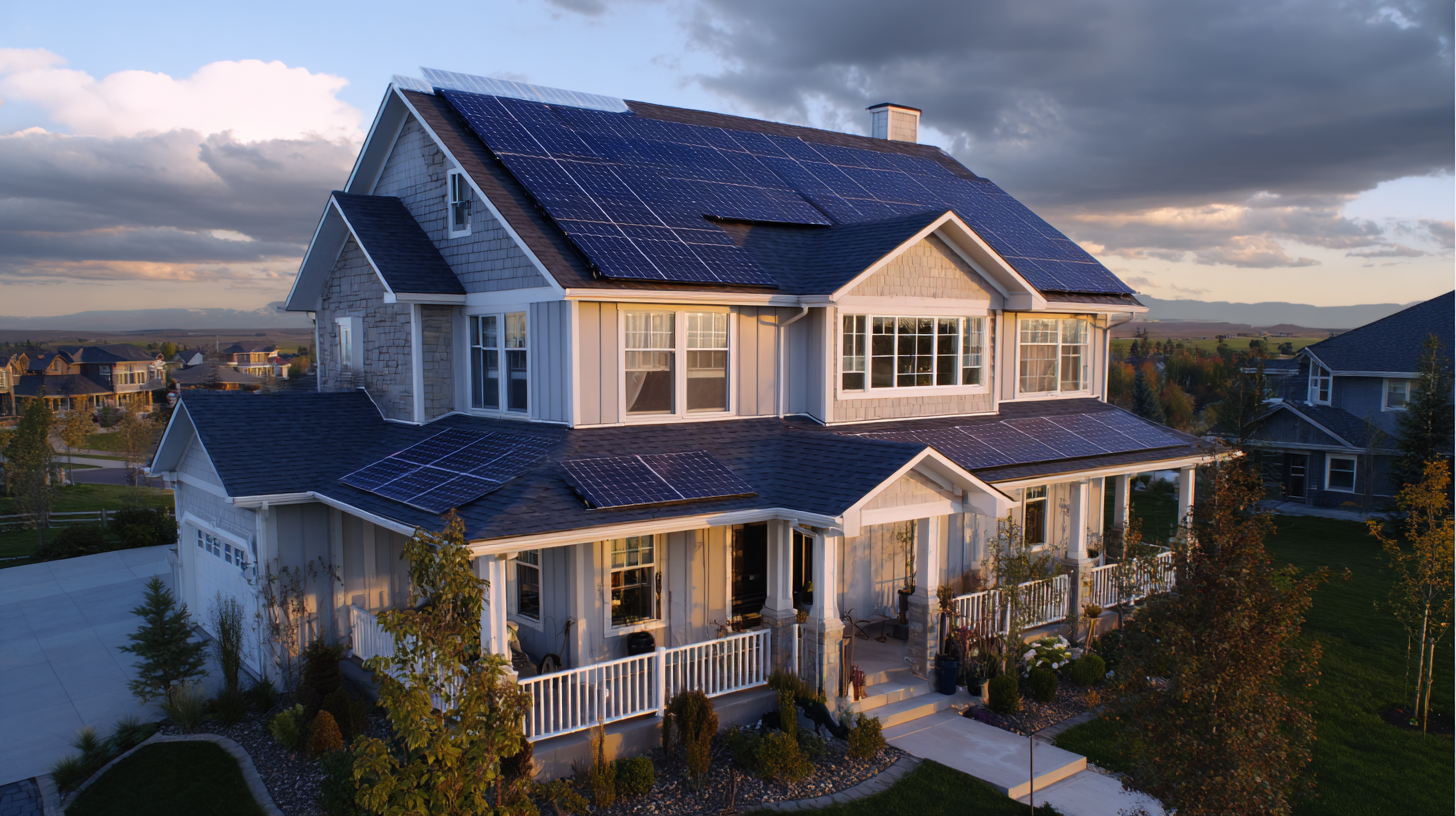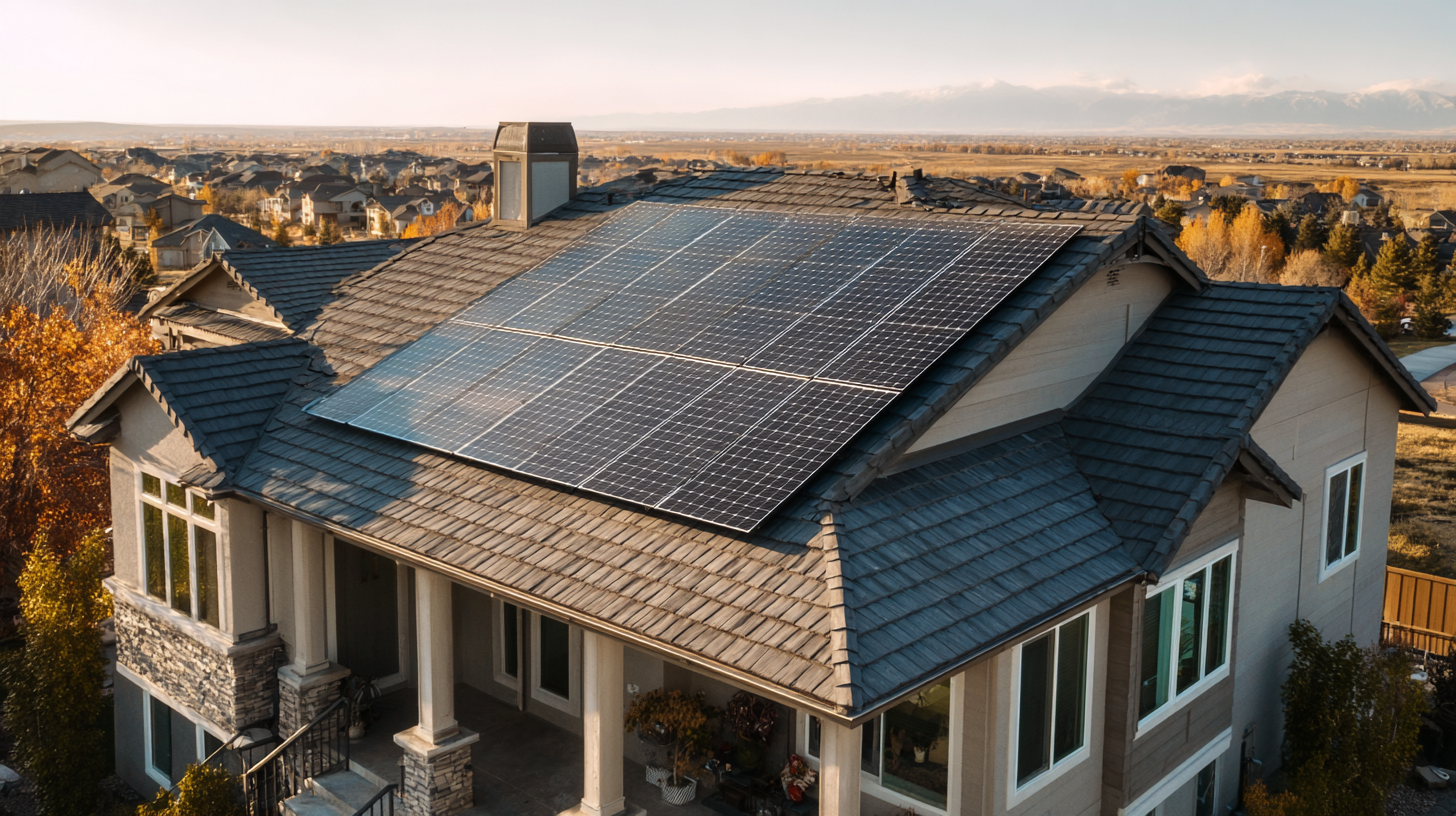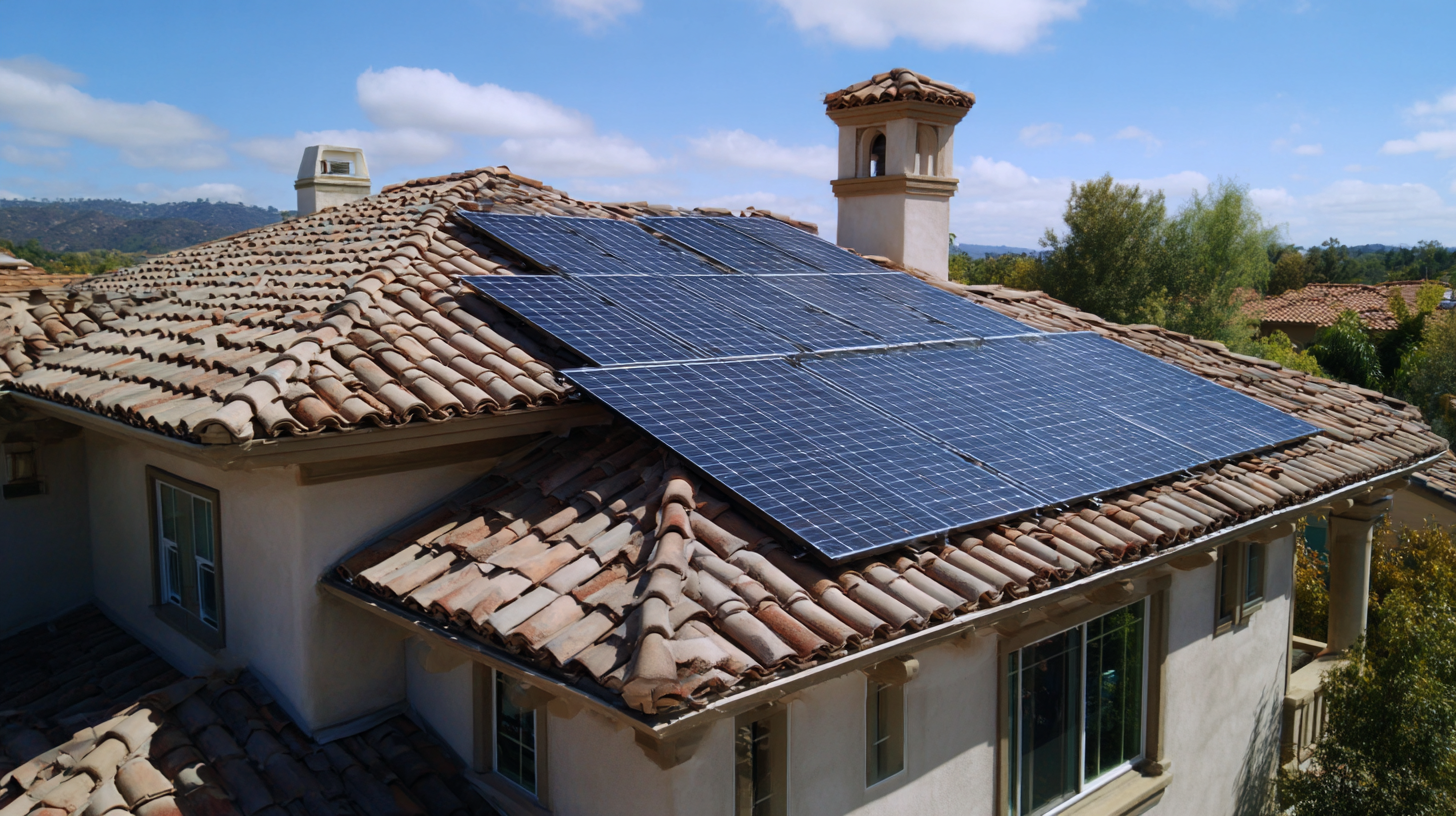Ultimate Guide to Choosing the Best Solar Panels for Your Home in 2023 with Expert Insights
In the quest for sustainable energy solutions, the choice of solar panels for house installations has become a pivotal decision for homeowners in 2023. With the growing emphasis on reducing carbon footprints and increasing energy efficiency, selecting the right solar panel system can significantly impact both your energy bills and environmental contribution. This ultimate guide aims to simplify the process of choosing the best solar panels for your home by providing expert insights into the latest technologies, installation options, and financial considerations.

Whether you are a newcomer to solar energy or looking to upgrade your existing system, understanding the various types of solar panels available, their benefits, and key features will empower you to make informed decisions that align with your home's energy needs and budget. Join us as we explore the crucial factors that will help you harness the power of the sun effectively and efficiently.
Understanding the Different Types of Solar Panels: Monocrystalline vs. Polycrystalline
When it comes to selecting solar panels for your home, understanding the distinctions between monocrystalline and polycrystalline options is essential.
 Monocrystalline solar panels are known for their high efficiency and a sleek appearance. Made from a single crystal structure, they typically have higher energy conversion rates, making them ideal for homeowners with limited roof space. Their uniform black color also adds aesthetic value, often leading to a more modern look on your property.
Monocrystalline solar panels are known for their high efficiency and a sleek appearance. Made from a single crystal structure, they typically have higher energy conversion rates, making them ideal for homeowners with limited roof space. Their uniform black color also adds aesthetic value, often leading to a more modern look on your property.
On the other hand, polycrystalline solar panels are made from multiple silicon crystals, resulting in a bluish hue and a slightly lower efficiency compared to their monocrystalline counterparts. However, they are generally more affordable and offer a good balance between cost and performance. Polycrystalline panels are a great choice for those with ample installation space, as their lower efficiency can be offset by the larger surface area covered. Choosing between these two types depends largely on your budget, space availability, and energy needs, making it vital to weigh these factors carefully before making a decision.
Key Factors Influencing Solar Panel Efficiency Ratings and Performance in 2023
When selecting solar panels for your home in 2023, understanding the key factors that influence efficiency ratings and performance is crucial. One of the primary metrics to consider is the solar panel's conversion efficiency, which measures how much sunlight is converted into usable electricity. According to the National Renewable Energy Laboratory (NREL), average efficiency ratings for residential solar panels have risen significantly in recent years, with many top-tier models exceeding 22%. This increase in efficiency not only maximizes energy yield but also reduces the space needed for installation.
Another important factor is temperature coefficient, which indicates how a solar panel's output decreases as temperatures rise. Reports from the Solar Energy Industries Association (SEIA) suggest that panels with a lower temperature coefficient perform better in hot climates. Additionally, warranties and durability ratings should not be overlooked. A panel's longevity is often supported by robust product warranties, typically ranging from 25 to 30 years, reflecting their reliability and performance promise over time. With these factors in mind, homeowners can make informed decisions that ensure optimal energy production and long-term savings.
Cost Analysis: Breakdown of Solar Panel Installation Expenses and Return on Investment
When considering solar panel installation for your home, understanding the costs involved and the potential return on investment is crucial. In 2023, the cost of solar panels varies significantly based on system size, type, and the specific energy needs of your household. A thorough cost analysis reveals that while initial expenses can be substantial, federal tax credits and long-term savings on energy bills make solar panels a worthwhile investment for many homeowners. Recent studies indicate that solar installations not only reduce electricity costs but also enhance property values, offering a reliable financial return over time.
Moreover, advancements in photovoltaic technology are continuously driving down prices while improving efficiency. This trend indicates that investing in solar panels is not only about immediate savings but also about capitalizing on future energy cost trends. For instance, ongoing research into one-axis tracking systems shows a notable reduction in levelized cost of electricity (LCOE), making solar energy even more economically viable. As both residential and commercial solar solutions evolve, 2023 presents an opportune moment for homeowners to consider making their solar investment.

Exploring Incentives and Rebates: How Government Policies Affect Solar Panel Choices
As the solar energy market evolves, understanding how government incentives and rebates impact your solar panel choices is crucial for homeowners in 2023. Various policies, grants, and tax credits can significantly reduce the upfront costs of solar installations, making renewable energy more accessible. For instance, in many regions, the federal solar tax credit allows homeowners to deduct a percentage of their installation costs from their federal taxes. This can lead to substantial savings, encouraging more homeowners to consider solar energy options.
Additionally, many states and local governments offer their own incentives, such as cash rebates, property tax exemptions, and performance-based incentives, which can complement federal tax benefits. These programs vary widely depending on location and can influence the decision-making process when selecting solar panels. Homeowners should research available incentives in their area and factor them into their budget to optimize the financial benefits of switching to solar energy. Understanding these policies not only helps in choosing the right solar panel system but also maximizes savings in the long run, paving the way for a cleaner and more sustainable future.
Top Industry Trends in Solar Technology Innovations for Homeowners in 2023
As solar technology continues to evolve, homeowners in 2023 are witnessing an array of innovative trends that are reshaping energy consumption and sustainability. One of the most significant advancements is the development of high-efficiency solar panels that maximize energy output while minimizing space usage. These next-generation panels are designed with enhanced materials and technology that allow them to capture more sunlight, making them ideal for residential use where roof space may be limited.
Additionally, smart solar technology is becoming increasingly prevalent. Integrating smart features enables homeowners to monitor their energy production and consumption in real-time through mobile apps or web platforms. This innovation not only empowers homeowners to optimize their energy usage but also complements home automation systems. Coupled with energy storage solutions, these systems offer unprecedented control over energy management, reducing dependence on the grid and increasing the resilience of home energy systems. As these trends continue to surface, they are making solar energy more accessible and efficient for homeowners seeking to invest in renewable energy solutions.
Ultimate Guide to Choosing the Best Solar Panels for Your Home in 2023
| Panel Type | Efficiency (%) | Cost per Watt ($) | Warranty (Years) | Weight (lbs) | Temperature Coefficient (%/°C) |
|---|---|---|---|---|---|
| Monocrystalline | 20-22 | $0.80 | 25 | 40 | -0.3 |
| Polycrystalline | 15-18 | $0.60 | 25 | 45 | -0.4 |
| Thin-Film | 10-13 | $0.50 | 10 | 50 | -0.2 |
| Bifacial | 18-22 | $0.85 | 30 | 45 | -0.3 |


